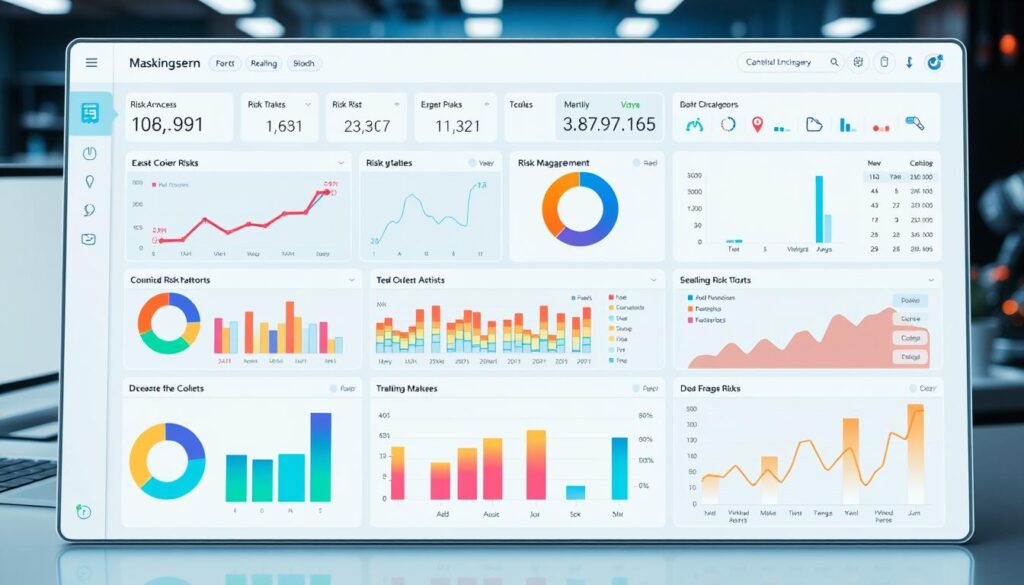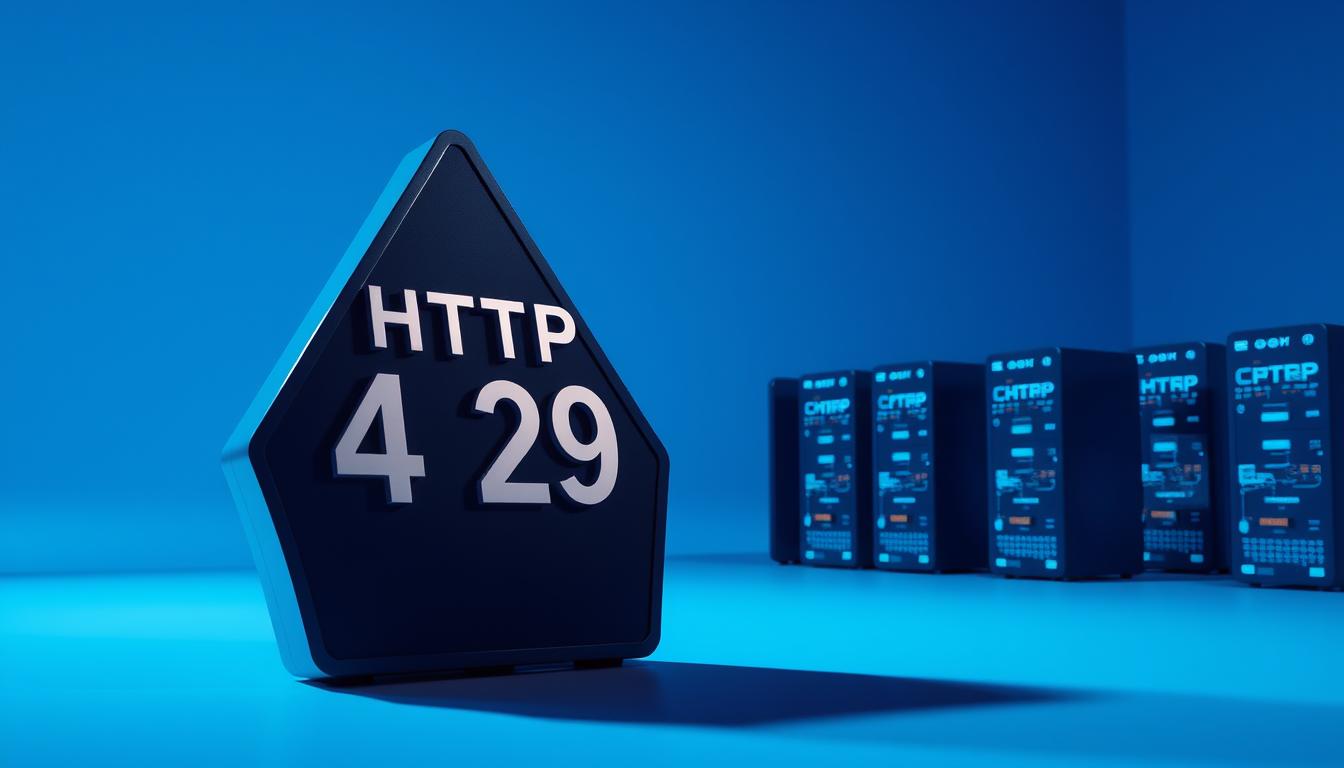FTC disclaimer: This post contains affiliate links and I will be compensated if you make a purchase after clicking on my link.
Are you finding it hard to manage enterprise risk? Integrated Risk Management (IRM) software might be what you need. But with so many choices, picking the right one can be tough. This guide will explore the top 7 IRM solutions to help you track risks, keep your business running, and record digital threats.
IRM software brings together all risk management tasks. It makes your governance, risk, and compliance (GRC) programs better. These tools help you spot, assess, and manage risks on a big scale. They work with cloud or on-premise systems. IRM software lets you watch important metrics, deal with third-party risks, and handle daily threats.
Key Takeaways
- Integrated Risk Management software streamlines risk tracking and ensures business continuity.
- These tools unify and centralize risk management processes, enhancing governance, risk, and compliance (GRC) programs.
- IRM software enables effective identification, assessment, and management of risks on a broad scale, whether cloud-based or on-premise.
- These solutions help monitor key metrics, handle third-party risks, and manage day-to-day threats.
- IRM software offers a practical solution for businesses stretched thin by manual tracking and endless spreadsheets.
Understanding Integrated Risk Management (IRM) Software
In today’s world, managing risk is key for all businesses. IRM software helps spot, check, and lower many risks. It covers financial, operational, and strategic threats. These tools help businesses make smart choices and stay strong when things get tough.
Definition and Purpose of IRM Software
IRM software uses tech to make risk management easier. It’s designed to handle Compliance Risk Software, Risk Identification and Assessment, and Risk Governance Framework. It combines data to give a full view of risks, helping businesses focus on the biggest threats.
Key Features of Effective IRM Solutions
Good IRM software has a few important features:
- Risk finding and checking tools to spot and look at possible risks
- Risk sorting and fixing plans to tackle the biggest dangers
- Tools for following rules and standards to keep up with laws
- Systems for audits to make them smoother and keep records
- Reports and analytics to show the risk situation in real time
- Features for teamwork to help different groups work on risk plans
With these features, companies can build a strong Risk Governance Framework. This framework fits with their business plan and helps them deal with today’s risk challenges.
“Integrated risk management involves input from all teams and centers risk as a fundamental part of business strategy.”

Top 7 Integrated Risk Management Software Options
Managing risk in your organization is crucial. A strong Integrated Risk Management (IRM) platform can help a lot. These tools help with Risk Monitoring and Reporting, GRC, and more. Here are seven top IRM software options to improve your risk management:
1. LogicManager
LogicManager automates tasks and centralizes risk, compliance, and audits. It’s easy to use and reports well. This makes it a favorite for streamlining risk management.
2. Resolver
Resolver’s IRM platform connects risk across different areas, improving awareness and performance. It handles many types of risk, making it great for all sizes of organizations.
3. RiskWatch
RiskWatch is easy to use and helps move from manual to automated workflows. It has strong audit tools and an intuitive design. It’s perfect for those focused on risk.
4. RSA Archer
RSA Archer is designed for security-focused groups, offering many risk tools. It integrates well and has strong IT security. It’s a top choice for a complete risk management solution.

“Centraleyes is known as the ‘Swiss Army knife’ for IT risk, compliance, and third-party security assessments, offering extensive features and flexibility.”
These are just a few of the best IRM software options out there. Each has its own special features. It’s important to pick the one that best fits your organization’s needs.
Key Criteria for Selecting IRM Software
Choosing the right Integrated Risk Management (IRM) software is important. You need to think about usability, integration, and scalability. These factors greatly affect your risk management success.
Usability and User Experience
The IRM software should be easy to use. It should have a simple interface. This makes it easy for your team to find the information they need.
Risk Identification and Assessment should be easy. Users should be able to input data and analyze trends without trouble. They should also be able to make reports quickly.
Integration Capabilities
Good IRM software works well with your current systems. It should share data in real-time. This gives you a complete view of your Risk Governance Framework.
Check if the software connects with your ERP and CRM tools. This integration improves data accuracy and makes workflows smoother. It also helps with Risk Monitoring and Reporting.
Scalability and Customization
Your IRM software should grow with your business. Look for solutions that can adapt as your needs change. They should let you add or change features easily.
It’s also important to customize the software. This ensures it fits your Risk Governance Framework and risk management strategy. This customization is key for success in the long run.
| Criteria | Importance | Key Considerations |
|---|---|---|
| Usability and User Experience | High | Intuitive interface, straightforward navigation, seamless data input and analysis |
| Integration Capabilities | High | Seamless integration with existing business technologies, real-time data exchange |
| Scalability and Customization | High | Modular, adaptable risk management capabilities, ability to align with organizational needs |
By looking at these criteria, you can find the right IRM software. It should meet your current needs and support your future growth.

Benefits of Using IRM Software
Integrated Risk Management (IRM) software is key for businesses today. It helps with Enterprise Risk Management Solutions and Operational Risk Management Tools. These tools improve how a company finds, checks, and lowers risks.
Enhanced Decision Making
IRM software gives real-time updates on risks. This helps leaders make better choices. It combines data from many places, giving a full view of risks. This makes managing risks more strategic and effective.
Regulatory Compliance
Dealing with many rules can be hard. IRM software makes it easier to follow rules and avoid fines. It has tools for reports, policies, and audits, showing you follow rules well.
Improved Risk Assessment
Good risk assessment is key to managing risks well. IRM software has tools like decision trees and sensitivity analysis. These help find, check, and sort risks. It makes understanding risks easier, helping to manage them better.
| Benefit | Description | Key Features |
|---|---|---|
| Enhanced Decision Making | IRM software provides real-time insights and updates on risk status, empowering decision-makers. |
|
| Regulatory Compliance | IRM software simplifies the process of managing regulatory compliance, reducing the risk of non-compliance. |
|
| Improved Risk Assessment | IRM software offers advanced tools to help organizations accurately identify, evaluate, and prioritize their risks. |
|
Using Enterprise Risk Management Solutions, Operational Risk Management Tools, and Compliance Risk Software helps a lot. It makes decisions better, follows rules easier, and checks risks well. This leads to success and strength in business.

Challenges in Implementing IRM Software
Starting Integrated Risk Management (IRM) software can be tough. One big problem is getting users to adopt it. This is especially true for systems that are very customizable but hard to learn.
People used to old systems or doing things by hand might not want to change. They need a lot of training and help to get used to the new IRM.
Another big challenge is moving data from old systems to the new Risk Governance Framework. This can take a lot of time and effort. It’s important to make sure the data is right and moves smoothly to the new system.
| Key Challenges in IRM Software Implementation | Potential Impact |
|---|---|
| User Adoption Issues | Resistance to change, limited user engagement, and decreased productivity during the transition period |
| Data Migration Concerns | Inaccurate or incomplete data transfer, leading to compromised Risk Identification and Assessment and decision-making |
| Cost Considerations | Unexpected expenses related to initial investment, ongoing maintenance, and potential future upgrades of the Integrated GRC Platform |
Costs are a big challenge too. Companies have to think about the first cost and the ongoing costs. They also need to consider how much it will cost to make the system work with what they already have.
To overcome these challenges, companies should plan carefully. They should train users well and make sure they have enough resources. This way, they can make the most of Integrated Risk Management and improve their risk management.
Making the Transition: Implementation Tips
Getting Integrated Risk Management (IRM) software into your company needs a good plan. Start by making a clear plan that matches your IRM goals with your business goals. Use templates and pre-built workflows to make setup easier and smoother.
It’s important to give your team good training and support for the IRM system. Make sure they know how to use it well. Ask for feedback to make it better.
Keep checking and improving your IRM setup. Use the system’s tools to see how it’s doing. Talk to your team to make sure it meets your business needs.
Developing a Clear Strategy
- Align IRM goals with your organization’s overall risk management objectives
- Utilize pre-built templates and workflows to streamline the implementation process
- Prioritize critical risk areas and implement the system in a phased approach
Training and Support for Users
- Provide comprehensive training programs to ensure user adoption and proficiency
- Foster a risk-aware culture by encouraging feedback and open communication
- Offer ongoing support and resources to address user questions and concerns
Continuous Evaluation and Improvement
| Key Metric | Benefit |
|---|---|
| Risk Mitigation Strategies | Monitor the effectiveness of your risk mitigation efforts and identify areas for improvement |
| Risk Monitoring and Reporting | Leverage data-driven insights to refine your risk management processes and enhance decision-making |
| Integrated GRC Platform | Ensure the IRM solution remains aligned with your evolving business needs and industry regulations |
“Successful implementation of an Integrated Risk Management (IRM) strategy results in fewer incidents and injuries, avoidance and reduction in claims costs and potential litigation, strengthened partnerships with brokers and agents, and improved workflows, metrics, and trend reports supporting team efficiency and decision making.”
Future Trends in IRM Software
The world of enterprise risk management is changing fast. The future of Integrated Risk Management (IRM) software will see big changes. Two key trends are the use of Artificial Intelligence (AI) and cloud-based platforms.
Artificial Intelligence in Risk Management
AI is changing how we manage risks. It helps predict and prevent problems. AI also makes Risk Monitoring and Reporting faster and more accurate.
The Rise of Cloud-Based Solutions
Cloud-based IRM software is becoming more popular. It offers flexibility, scalability, and better teamwork. Cloud-based solutions make it easy to access and share risk data anytime, anywhere.
New trends include better cybersecurity, IoT integration, and advanced data visualization. These tools help organizations stay ahead in a complex world. They are key to staying agile and growing.
| Benefit | Improvement Metrics |
|---|---|
| Improved risk reporting visibility and efficiency for executive management and the board | Based on MetricStream customer responses and GRC Journey Business Value Calculator |
| Cost savings in risk assessment and related processes | Based on MetricStream customer responses and GRC Journey Business Value Calculator |
| Enhanced risk and control framework operational efficiency | Based on MetricStream customer responses and GRC Journey Business Value Calculator |
“The future of IRM software lies in its ability to leverage innovative technologies like AI and cloud computing to provide organizations with the agility and insights they need to navigate an increasingly complex risk landscape.”
Conclusion: Choosing the Right IRM Software for Your Needs
Choosing the best Integrated Risk Management (IRM) software is key. You need to look at your risk management needs, budget, and tech skills. Important things to think about include how well it integrates, its analytics, customization, support for rules, and if it can grow with your company.
Summary of Key Points
This guide showed how IRM software helps manage risks, follow rules, and make smart choices. We talked about what makes good IRM software and looked at top options. This helps you choose wisely.
Final Recommendations and Next Steps
When picking an IRM software, check the vendor’s reputation, support, and risk management support. Try a trial to see if it fits your company’s needs. Make sure everyone involved agrees the software meets your enterprise risk management and risk mitigation goals.








